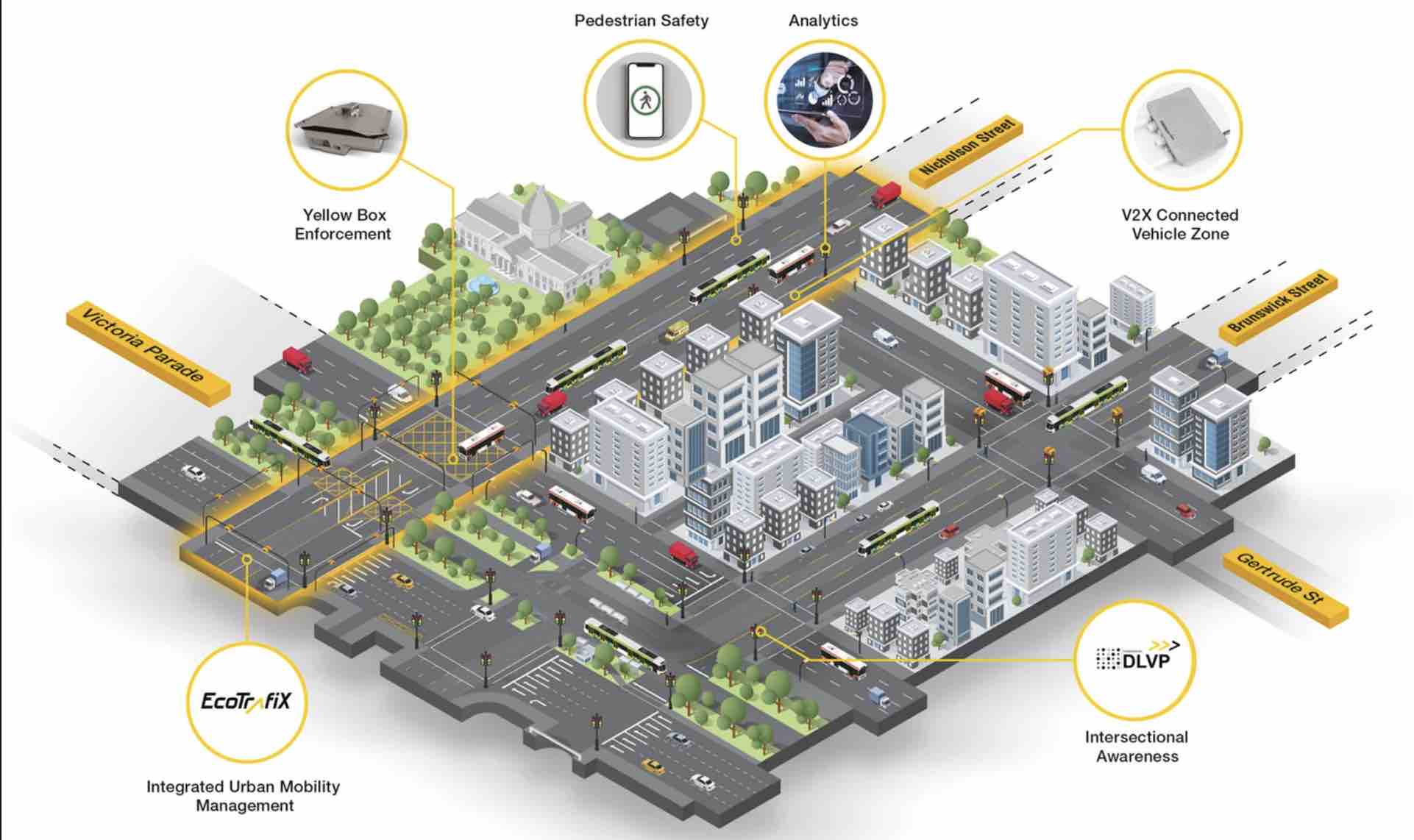One of Melbourne’s busiest roads will host a traffic management system using the latest technology to reduce traffic jams and improve road safety.
The ‘Intelligent Corridor’ at Nicholson Street, Carlton will be launched by the University of Melbourne, Austrian technology firm Kapsch TrafficCom and the Victorian Department of Transport.
Covering a 2.5km (1.5-mile) stretch of Nicholson Street between Alexandra and Victoria Parades, the Intelligent Corridor will use sensors, cloud-based AI, machine-learning algorithms, predictive models and real time-data capture to ease congestion, improve road safety for cars, pedestrians and cyclists, and reduce emissions from traffic.
The project will collect before-and-after data to demonstrate the corridor’s effectiveness. Leveraging different types of traffic sensors already installed by the Australian Integrated Multimodal EcoSystem (AIMES), the Intelligent Corridor will be tuned to improve outcomes over the next three years.
The sensors will connect and monitor all parts of the transport environment. Safety metrics will be incorporated in real-time control of traffic signals, derived from traffic safety software developed by Advanced Mobility Analytics Group.
AIMES is reportedly the world’s first and largest ecosystem for testing emerging connected transport technologies at large scale in complex urban environments. It incorporates over 100km (62 miles) of road network in Melbourne, bounded by Lygon and Hoddle Streets, and Victoria and Alexandra Parades and receives support from the Victorian Department of Transport.

The Intelligent Corridor marks a new phase, providing a new level of monitoring, with sensors on every intersection and a host of initiatives, including Kapsch TrafficCom’s corridor management platform EcoTrafiX, to create a ‘world-leading’ traffic management system.
According to AIMES director and professor of transport engineering at the University of Melbourne, Professor Majid Sarvi, the Intelligent Corridor could provide a model for cities around the world to reduce the costs of urban congestion.
“In Melbourne alone, 492 people lost their lives in crashes at urban intersections – with more than half of these being pedestrians, cyclists or motorcyclists – between 2006 and 2019. Our Intelligent Corridor will use the latest technology to better manage traffic and make our roads safer for everyone,” said Professor Sarvi.
Director of signal services with the Victorian Department of Transport Niloo Karimi said the Intelligent Corridor was an important and exciting step for Melbourne. “The city has faced an increasing volume of road users over the past few decades, leading to delays and an increasing number of accidents.
“Now, academic researchers, industry and government will draw on connected transport technology to explore better outcomes and solve issues of safety and congestion to create a safer, cleaner and smarter transport future for Melbourne.”
The Intelligent Corridor is supported by an A$2m (£1.14m) Australian Research Council (ARC) Linkage grant, with contributions from the University of Melbourne and industry partners Kapsch TrafficCom and Advanced Mobility Analytics Group.





